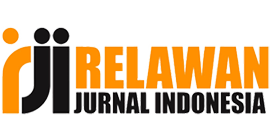Pengembangan Norma Penilaian Tes Endurance Atlet Renang KU 1 DIY Berbasis Multistage
DOI:
https://doi.org/10.31539/jpjo.v8i2.13546Abstract
This research aims to develop multistage-based endurance test norms for KU 1 swimming athletes that are packaged in an easy, measurable, and field-applicable manner. This research falls into the category of development research or Research and Development (R&D). Data analysis in this study uses quantitative descriptive methods. From the research, the results obtained are the assessment norm categories: "inferior" in the interval of 3.5-4.0 test level scale, "poor" in the interval of 4.0-4.6 test level scale, "sufficient" in the interval of 4.6-5.1 test level scale, "good" in the interval of 5.1-5.7 test level scale, and "very good" in the interval of 5.7-6.2 test level scale. So, this research concludes that a product has been developed in the form of the Development of Endurance Test Assessment Norms for Swimming Athletes KU 1 DIY Based on Multistage. The development assumption used in this research is that it can make it easier for coaches to provide training programs and independent physical training for swimming athletes. The limitation of the product Development of Endurance Test Assessment Norms for KU 1 DIY Swimming Athletes Based on Multistage is proposed only for the Yogyakarta region, so the research sample was obtained only from athletes residing in Yogyakarta. In conclusion, there is a developed product in the form of the Development of Endurance Test Assessment Norms for Swimming Athletes KU 1 DIY Based on Multistage.
Keywords: Assessment Norms, Athletes, Endurance Test, Multistage, Swimming
References
Boroh, Z., & Cahyani, N. (2016). Zeth Boroh, Nani Cahyani. Jurnal Prestasi Olahraga, 12, 41–60.
Cossio, B. G., et al. (2019). Swimming performance and endurance testing. Sports Science Review.
DW Cita, R. A. (2013). Kualitas Air Dan Keluhan Kesehatan. Urnal Kesehatan Lingkungan, 26–31.
Falaahudin, A., Dody Tri Iwandana, Ali Md Nadzalan, & Moh. Kholil. (2022). Sosialisasi Meningkatkan Kondisi Fisik Atlit Tinju Kabupaten Bantul. Jurnal Bina Pengabdian Kepada Masyarakat, 3(1), 7–12. https://doi.org/10.55081/jbpkm.v3i1.666
Falaahudin, A., Iwandana, D. T., Nugroho, W. A., & Rismayanthi, C. (2021). The relationship between arm muscle strength, leg muscle strength, arm power and leg power on the 25 meter crawl style swimming achievement. MEDIKORA, 20(1), 93–102. https://doi.org/10.21831/medikora.v20i1.40109
Falaahudin, A., & Sugiyanto, F. (2013). Evaluasi Program Pembinaan Renang Di Klub Tirta Serayu, Tcs, Bumi Pala, Dezender, Spectrum Di Provinsi Jawa Tengah. Jurnal Keolahragaan, 1(1), 13–25. https://doi.org/10.21831/jk.v1i1.2342
Hinda Zhannisa, U., Fatkhu Royana, I., Kusuma Prastiwi, B., & Slamet Pratama, D. (2018). Analisis kondisi fisik tim bulutangkis Universitas PGRI Semarang. Journal Power Of Sports), 1(1Hinda Zhannisa, Utvi Fatkhu Royana, Ibnu Kusuma Prastiwi, Bertika Slamet Pratama, Dani), 30–41.
Hudayhana, N. L. (2014). Pengaruh Modifikasi Latihan Renang Menggunakan Ban terhadap Kecepatan Renang 50 Meter Gaya Bebas. Jurnal Kesehatan Olahraga, 2(2), 23–25.
Ichwanun NH, B. (2017). Pengembangan program aplikasi VO2Max dan database menggunakan delphi 7.1 untuk atlet Pelatihan Cabang (PelatCab) di Persatuan Bulutangkis Seluruh Indonesia (PBSI) Kota Malang. Universitas Negeri Malang.
Imansyah, F. (2020). Hubungan Antara Kekuatan Otot Tungkai Dan Kekuatan Otot Lengan Terhadap Hasil Kecepatan Renang 50 Meter Gaya Bebas Pada Atlet Putri Club Bangka swiming. (Jurnal Ilmu Keolahragaan, 21(1), 1–9.
Irawan, R. (2017). Studi Kelayakan Fasilitas Sarpras Olahraga Indoor di FIK UNNES. Jurnal Penjakora, 4(1), 90–101.
Kurniawan, R. A., Widyatama, A. W., Setiani, H., Ikram, M. W., Arridho, M. N., Kurniawan, A. T., & Utami, E. (2021). Pentingnya Menggunakan Check Constraints Dalam Desain Database Sistem Pendukung Keputusan. Journal of Information System Management (JOISM), 3(1), 8–11. https://doi.org/10.24076/joism.2021v3i1.373
Nugroho, F. A., & Fifukha Dwi Khory. (2020). Pengaruh Media Audio Visual Dan Latihan Drill Terhadap Hasil Belajar Renang Gaya Dada. Pendidikan Olahraga Dan Kesehatan, 08(3), 137–142.
Pratama, A., Supriyadi, S., & Raharjo, S. (2020). Survei Manajemen Pembinaan Prestasi Cabang Olahraga Bulutangkis Di Pb Ganesha Kota Batu. In Jurnal Sport Science (Vol. 10, Issue 1, p. 21). https://doi.org/10.17977/um057v10i1p21-31
Pratiwi, I. (2015). Sekolah renang di kota semarang dengan penekanan design sustainable architecture. Journal of Architecture, 4(2), 1–9.
Putri, R. J., Buana, U. M., Putra, Y. M., & Buana, U. M. (2019). SISTEM INFORMASI MANAJEMEN Pemanfaatan Teknologi Informasi Sistem Pengambilan Keputusan Pada PT . Astarindo Daya Sakti Dosen : Yananto Mihadi Putra , SE , M . Si. December, 1–11.
Rampinini, E., et al. (2016). Multistage tests in sports science: Relevance to swimming performance and endurance. International Journal of Sports Physiology.
Rønnestad, B. R., et al. (2014). Swim endurance tests and training: A comparative study of methods. Journal of Sports Sciences
Thomas, J. R. (2017). Norm-referenced assessment in sports: Concepts and applications. Journal of Sport and Exercise Psychology.
Yudha Prawira, A., Prabowo, E., & Febrianto, F. (2021). Model Pembelajaran Olahraga Renang Anak Usia Dini: Literature Review. Jurnal Educatio FKIP UNMA, 7(2), 300–308. https://doi.org/10.31949/educatio.v7i2.995


